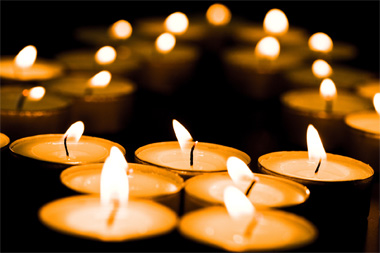
Bigstock

Early Childhood Question Corner
Common themes appear in holidays and celebrations across many cultures. By connecting themes, as suggested in the Question Corner installment "How can I plan inclusive holiday celebrations?" you can show children that holidays and celebrations are an expression of cultural and religious pride, and help them understand the commonality of certain human feelings, celebrations and their meaning. For example, by trying the following activity, Looking at Lights (two versions are provided) you can help children explore the ways people use lights in the holidays of Christmas, Chanukah, Kwanzaa, Santa Lucia Day, Diwali, Halloween and in celebrations such as birthdays.
With your child, look at and explore any candles and candle holders you have in your home, especially those that are used in celebrations. Let them tell you what they know about how the candles are used, and then share more information. Together, find out how candles and other lights are used in other celebrations. You might take a trip to the library, do some research on the Internet, or talk to someone in the community.
Give your child clay or play dough to use to make a candle holder. Show them how to roll the clay or play dough to make it softer and easier to work with. Demonstrate how to use a candle to make a hole in the clay that will hold the candle. Let them use their imagination to create a special candle holder.
As various holidays that they know about arrive, encourage them (even if they may not practice that particular custom) to share with others what they learned about the meaning of lights for that holiday.
Display candles and candle holders and let children take turns holding and observing them. Ask children, "Does your family ever use candles? When do they use them?" Let children tell what they know about special candles they have seen before, and invite children to share other times they use candles during holidays and celebrations with their families. Give children an opportunity to learn more about candles they are unfamiliar with, and how lights are used in other celebrations. That might mean taking a trip to the library, doing some research on the Internet, or talking to someone in the community.
Invite children to use the clay or play dough to make a candle holder. Model how to roll the clay or play dough to make it softer and easier to work with. Show children how to use a candle to make a hole in the clay that will hold the candle.
Children can use the pictures or items for reference, or they can use their imaginations to create a special candle holder.
As various holidays that children have learned about arrive, have a child (who may not practice that particular custom) share what he or she learned about the meaning of lights for that holiday.
Excerpted from Bias-Free Foundations: Early Childhood Guidebook for Educators (1995, 30).
430.34 KB